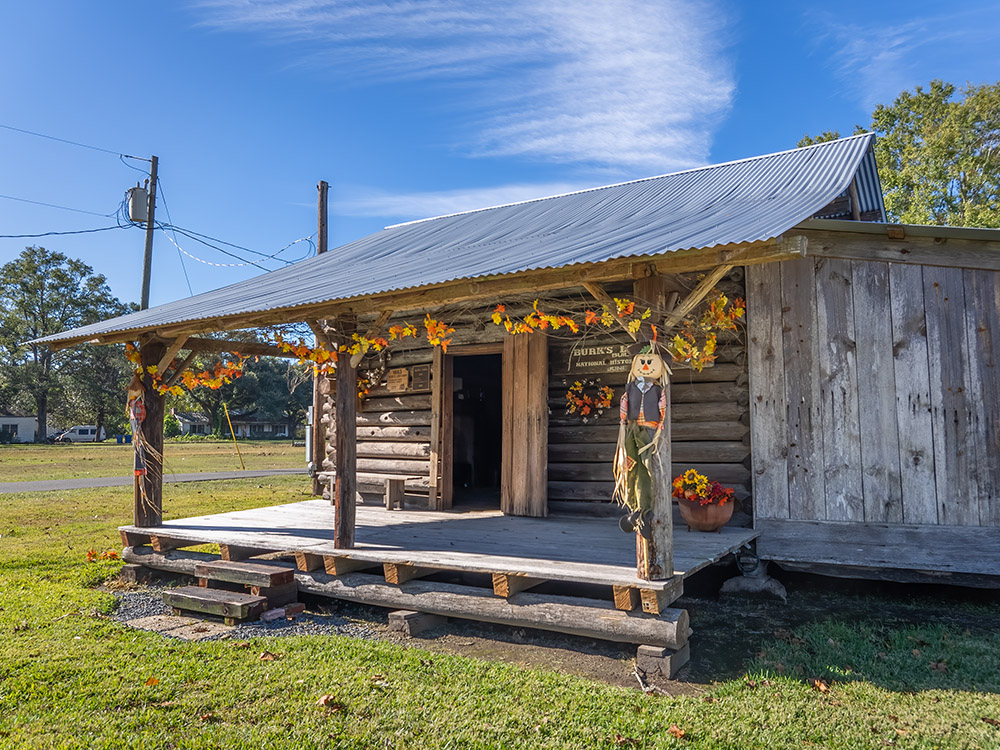The far western portion of Louisiana was once known as “No Man’s Land”, and it attracted outlaws who took advantage of the disputed territory to avoid justice. Charles “Leather Britches” Smith was one of those gunslingers.

The town of Merryville, Louisiana, population 967, is located on the western edge of the state, only two miles from the Sabine River and the Texas state line. The area became a Louisiana No Man’s Land, a neutral strip respected by both the Spanish and U.S. governments. The hands-off agreement opened the door for outlaws to move into the area. The Neutral Strip was void of laws and enforcement from 1806-1821. The United States took control of the region in a treaty with Spain in 1821.

justice in louisiana no man’s land
Joe Williamson, a Merryville real estate agent and history buff, says his family arrived in the area in 1836. “A lot of the inhabitants of the area came from Alabama going to Texas,” Williamson said. But unrest in Texas kept them from crossing the Sabine River. “That was the year Santa Anna decimated the Alamo,” Williamson explains, “so they stopped on this side of the Louisiana border”. One of Williamson’s ancestors acted as the local magistrate. “If someone got out of line, he would find ’em guilty or innocent,” Williamson said. “He had a giant live oak tree in his front yard, it’s called the hanging tree.”

leather britches and the shootout
The Merryville area was part of the booming timber business. But sawmill owners and employees were at odds when organized labor moved in. The dispute resulted in a gun battle in the nearby community of Grabow in 1912.


According to Williamson, “quite a few people were shot, with over 50 people injured and 58 people arrested”. The labor union enlisted a man called Charles “Leather Britches” Smith. He was a notorious gun fighter who roamed the Louisiana no man’s land. Leather Britches escaped the Grabow shootout. A local posse ambushed and killed Leather Britches in Merryville. They put his body on display at Merryville’s two-room jail house. The old concrete jail still stands in a wooded area off the main highway through town.

The citizens of Merryville eventually buried Charles “Leather Britches” Smith along the edge of the town cemetery. “I’ve always heard that they buried him upside down,” Williamson tells me. “So that if he was still alive in the grave and would try to dig himself out, he would dig himself to Hell.”


Merryville and leather britches featured on tv
explore the history of the louisiana no man’s land
The Merryville Museum takes you back in time. Home furnishings, tools from farming and the timber business, and local businesses are on display. One exhibit features relics from a century-old movie theater. And another recreates an old classroom, complete with desks with a holder for an ink well and a paddle on the teacher’s desk. You also learn that former Louisiana Governor Sam Jones grew up in the area. And you can see pictures of Red Cagle, a football player from Merryville High who played in the NFL in the 1930’s. Cagle’s photo appeared on the cover of Time magazine and a carton of Wheaties.




1883 log cabin at merryville museum
The two-room log cabin in front of the Merryville Museum was built by Andrew Jackson Burks in 1883. The structure was donated to the Merryville Museum by Burks’ descendants and moved from its original location four miles away. The cabin is furnished with period furniture and is open for tours.


getting there
The Merryville Museum and Historic Burks Log Cabin are located in downtown Merryville, LA at 628 North Railroad Avenue. Phone: (979) 864-0219, (337) 340-1228.
Merryville Museum, 628 N Railroad Ave, Merryville, LA 70653





Leave a Reply